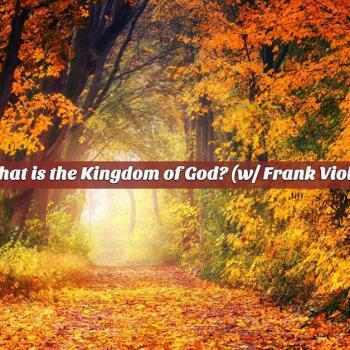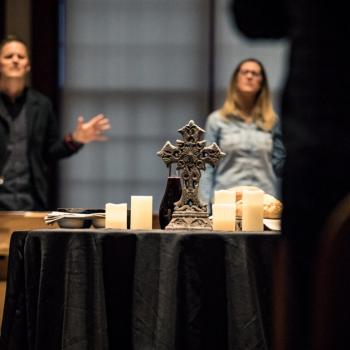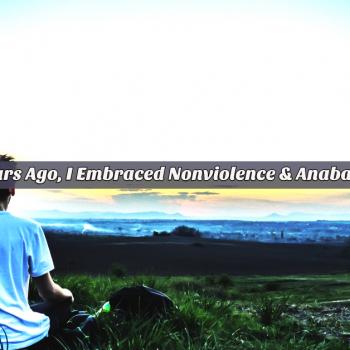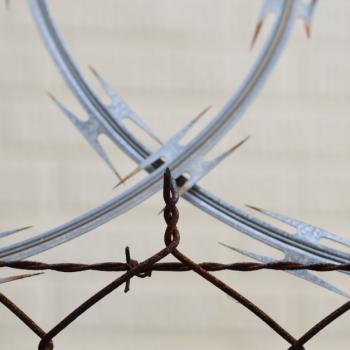
The following is part of a series on Hell, partially as a response to the Love Wins controversy. To catch up, go here.
As I stated in the first post, this section will be mostly based on Sharon Baker’s Razing Hell.
——————-
Hell Yes. Hell No! Or Who the Hell Cares?
Razing Gehenna
Sharon Baker recognizes the importance of Jesus’ warnings about the fires of hell. From her perspective, in order to understand hell in the gospels, we must realize that wrath in the Bible is twofold. First, wrath is what happens when God “gives them over” (Rom. 1). In other words, the pattern throughout Scripture is that God removes protection allowing people to experience the full consequences (on earth) for disobedient choices. Some might call this hell on earth. This is consistent with how God dealt with Israel in the Old Testament. Second, wrath is God’s purging love that burns away evil at the return of Christ (122).
Connecting hell, then, to Jesus must consider the twofold pattern above. The word in the New Testament for hell is Gehenna, which literally means: the Valley of the Son of Hinnom. This location is referenced throughout the Old Testament and is a valley outside of Jerusalem. It was a place of bloodshed (sometimes child sacrifice) that eventually was used to destroy dead bodies. The prophets speak of it as a place where fires devour corpses and the flames seem to burn non-stop (Isa. 30.33; 66.24). In this valley, the worms didn’t die and corpses were utterly destroyed. Some even believe that during the time of Jesus, this place became a trash heap of burning fire. We also know historically that when the Romans seized Jerusalem in 70 CE, they placed the dead bodies in the valley. Gehenna was a literal place of death and decay (128-129).
When Jesus appeals to Gehenna, he evokes a literal place, not in the underworld, but outside of Jerusalem. Most of the time Jesus uses “hell” in the context of parabolic imagery. To say “hell” is to use imagery that helps listeners understand the danger in this life and the next of not joining up with God’s kingdom purposes. There will be consequences in this life and also, by extension, in the life to come. Baker states: “Although the experience of suffering consequences for sin can seem like pure hell for many of us, I think Jesus refers to something more, something beyond that, when he uses the Gehenna imagery as a metaphor” (140).
She goes on to connect the “lake of fire” imagery from Revelation 20 with Gehenna, basically to say that the metaphor Jesus used pointed to this future reality of Judgment Day. Simultaneously, she reminds readers that this fire is God’s own self or at least comes from God. She states:
… [T]he lake of fire is the same as God’s fiery presents at judgment… [it] tests, purifies, and puts death and evil to death. So Otto stands in the fire. It burns away impurities. But what if auto has no good at all and him? The fire would burn all of him. It would completely destroy him. There would be nothing left of him, which means that he would be annihilated…. Otto [is] in one of two conditions: totally annihilated because after testing and purification nothing good and righteous remains (the second death – the death of death), or the completely good and righteous auto standing before God, tested and purified (144-145).
Summarizing Baker’s Hell
To summarize Sharon Baker’s view, we need to see that she doesn’t believe that the traditional view of eternal torment is consistent with the Bible. God, although wrathful, ultimately seeks to use this sort of judgment on sin as an opportunity to reconcile with broken humans. By understanding Scripture through the “Jesus lens” we are able to see that God is not a vengeful deity, but a God who is full of compassion and seeks a restorative form of justice. Judgment Day will come and all people, Christian and non-believer alike, will pass through the fiery heat of God’s purifying justice. All that is evil and brings death will be burned off like chaff, completely annihilated. All that is good will remain, so that we are fit for God’s renewed world as resurrected people, free from sin and decay.
Those without Christ will experience the pain they caused others and God as they endure the metaphorical flames of justice. The overwhelming nature of this will likely be more than they can bear. Yet, the possibility remains that this judgment will turn hatred to love, and that God will utilize wrath restoratively, which is constantly how such fire is depicted throughout the Scriptures. Those who hold onto hatred will ultimately cease to exist, because nothing human will remain.











